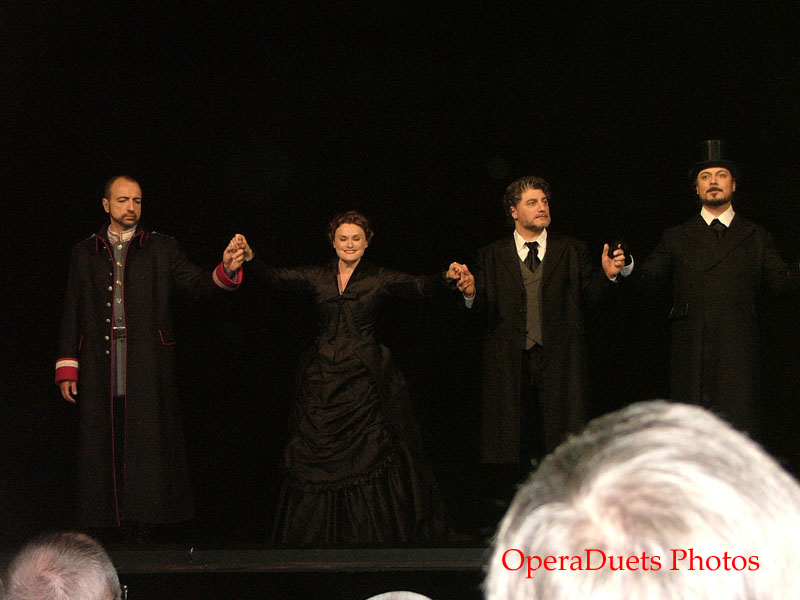Samson = José Cura
Dalila = Vesselina Kasarova
Abimelech = Jörn Schümann
High Priest = Laurent Naouri
Ancient Hebrew = Ante Jerkunica
Messenger = Clemens Bieber
First Philistine = Peter Maus
Second Philistine = Sergio Vitale
Alain Altinoglu, conductor
Director - Patrick Kinmonth
Stage design, Costume design - Patrick Kinmonth, Darko Petrovic
Light design - Manfred Voss
Dramaturgie - Katharina John, Miriam Konert
Chorus master - William Spaulding
Artistic production manager - Christian Baier
I love Saint-Saens' Samson et Dalila and act 2 is the best act. But today in Deutsche Oper Berlin I was bored and I was pained by listening to the mezzo Vesselina Kasarova. It was not helped by the feeling of lacking fresh air in the audience room. But, any way, I am pleased to say that both Jose Cura and Vesselina Kasarova was excellent in the big duet of act 2 beginning with En ces lieux and continued with Mon coeur s'ouvre a ta voix.
Kasarova's voice is deeper now and sound almost like an alto. Her voice lacks some agility and she was not helped by the young maestro's slowing the music. Jose Cura's voice seemed to have opened of by act 2 and continued its triumph in act 3. In act 1 his voice sounded muffled. Laurent Nouri was an excellent High Priest of Dagon.
This Samson et Dalila was not shocking, or edgy. It was not even interesting. Even having Jose Cura singing his heart out in Vois ma misere did not change the fact that this production failed to make us care. It was the best singing of this aria so this says the production failed. It did not fail because director chose to put the action to another time place, Paris at the time the opera was composed. It fail by having half-cooked ideas, by defying logic, by putting distractions up instead of making the audience think and feel. The young boy and young woman (his mother? and servant to Dalila), the boy was supposed to be the alter-ego of Samson, but what interpretive value did it give the opera? Little value but plenty of distractions to the real story. The offensive part was the end of the opera with cattle wagons and Philistine dressing down as if they were Jews off to Auschwitz. But the real offensive part of this offensiveness was to make Holocaust into kitsch and it did not even make sense.... BAD
Yes it was bad, really bad, I have never applauded so little in my life, except that time when I had almost broken my wrist.
UPDATE: All the reviews I have read about this production gives the highest praise to Vesselina Kasarova.
This page was last updated: June 20, 2022

